Carnivorous Sarracenia Trumpet Pitcher Maroon 8cm pot
£13.00
Out of stock
Carnivorous plants definitely fall into the category of weird, wonderful and downright fascinating. Mesmerising houseplant owners of all ages with their striking appearances and fascinating adaptations to capture and feed on insects and small creatures. It is no wonder they have held their popularity for decades.
Sarracenia, commonly known as a Trumpet Pitcher plant is a natural fungus gnat killer! If you have an issue with this pest this plant is for you.
The best place to start with carnivorous plants is by understanding their natural habitat and how their environment has led them to form such unique adaptations. Carnivorous plants have been on the planet for a long time, around forty million years and have been found on almost every continent and tropical island with Antarctica being the only exception.
Carnivorous plants are typically found in areas that are high in natural light and moisture, as well as water-logged areas like swamps where the nutrients in the soil are virtually non-existent. Many of their strange adaptations have been formed from this lack of nutrients.
All plants need basic nutrients to survive and without them, they don’t stand much of a chance.
Nitrogen and phosphorus are two of the most important nutrients plants need, nitrogen is the main component in chlorophyll which plants use for photosynthesis. The other is phosphorus, which is needed to make this process possible. Plants use phosphorus to take in, store and convert the sun’s rays. Without it, they would be unable to use the sun’s energy to create the biomolecules (proteins, amino acids, DNA) they need to grow and reproduce.
Carnivorous plants have adapted over millions of years to get these essential nutrients from their environment. Unable to get these nutrients from the soil they have formed traps to capture insects and small creatures that are rich in the nutrients they lack.
There are approximately 600 different species that fall into the Carnivorous plant category. These different species have found ways of attracting, trapping, killing, and absorbing their prey purely to extract the nutrients they need for survival.
Most carnivorous plants will use bright colours, distinctive smells, and sticky surfaces to attract insects but there are some key mechanisms that make up the variations of carnivorous plants and most species can be spread across these different hunting strategies
- Snap traps use rapid leaf movement to snap shut and capture their prey.
- Bladder traps suck in their prey with a small internal vacuum.
- Pitfall traps entice prey into a small rolled-up leaf with digestive enzymes.
- Flypaper traps utilize sticky mucus to trap their prey.
- Eel traps use inward-facing hairs to force their prey towards the digestive organ.
Click here to check our care instructions to find out how to look after your carnivorous plant.
Would you like to learn about carnivorous plants? Check our article here.
Pet Friendly
- How much light does the Sarracenia Trumpet Pitcher need?
- It thrives best in full sunlight. Place it near a window or outdoors where it can receive direct, unfiltered sunlight for several hours daily.
- Is the Sarracenia Trumpet Pitcher suitable for beginners?
- Yes, it’s a great choice for beginners due to its low maintenance needs and its natural ability to trap insects, reducing the need for chemical pest control.
- Can the Sarracenia Trumpet Pitcher be placed in a terrarium?
- While it can be grown in a terrarium, ensure it’s spacious and well-ventilated to accommodate its height and light requirements. A terrarium with an open top or adjustable ventilation is ideal.
☀️ Light
☀️☀️☀️ (High)
The Sarracenia Trumpet Pitcher thrives in bright, direct light. Position it in a spot where it can soak up plenty of sunshine, such as a south-facing window.
💧 Water
💧💧▫️ (Medium)
Keep the soil consistently moist, but not waterlogged. Use rainwater or distilled water if possible, as tap water can contain minerals that might build up and harm the plant.
🌡️ Temperature
🌡️🌡️▫️ (Average)
Sarracenia enjoys moderate temperatures typical of most home settings. Aim to keep your home between 15-25°C for optimal growth.
💦 Humidity
💦💦▫️ (Moderate)
This plant likes humidity, but nothing too extreme. A normal room humidity with some extra misting during dry periods will suffice.
🪴 Repotting
Repot your Sarracenia every 2-3 years or when it outgrows its pot. Use a well-draining soil mix designed specifically for carnivorous plants to ensure health and proper drainage.
🐾 Pet Friendliness
The Sarracenia Trumpet Pitcher is non-toxic and safe around pets. No worries about curious paws and noses around this plant!
✅🪴 Recommended Locations at Home
Place your Sarracenia in bright spots like near a south-facing window or in a conservatory where it can get plenty of light. It’s also a great addition to kitchens or bathrooms where the humidity tends to be higher.
✨ Other Plant Features
Beyond its captivating looks and pet-friendly nature, the Sarracenia is a practical choice for naturally controlling pests like fungus gnats. Its maroon colour and unique pitcher shape add an intriguing aesthetic to any space.
If you have any more questions about caring for your new Sarracenia or any other plants, our Mossbot is here to help! Feel free to contact us through our website for more information. Don’t forget, we also offer a free plant hospital service if your houseplants need a bit of extra TLC.

Free Care Guide With Every Purchase
Scan the plant pot QR for instant access to our care guide for your plant. No hassle, no stress, just healthy and happy plants.
Verified reviews from our customers
| 5 star | 96% | |
| 4 star | 3% | |
| 3 star | 1% | |
| 2 star | 0% | |
| 1 star | 0% |



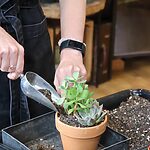
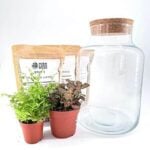
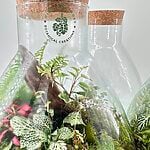
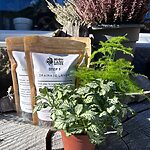

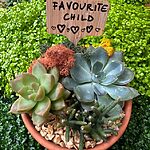
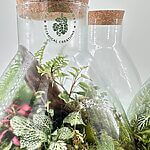


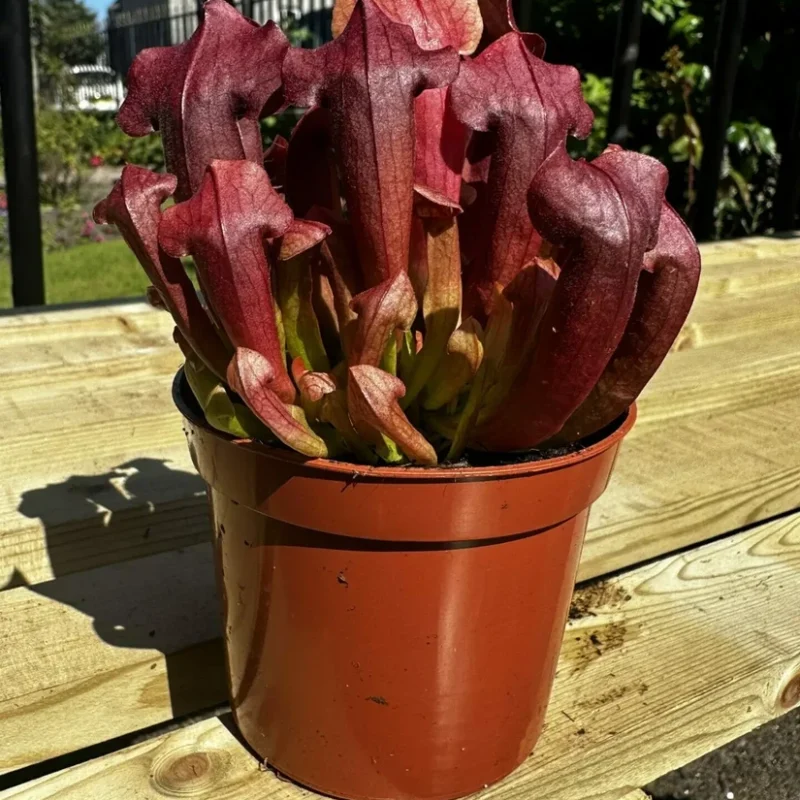





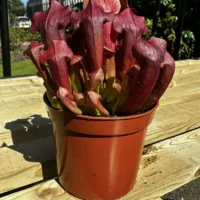
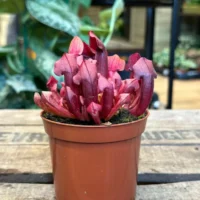
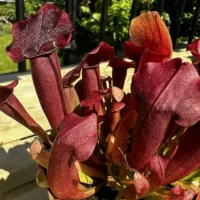

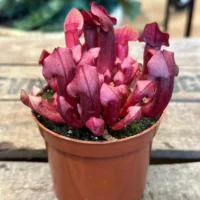
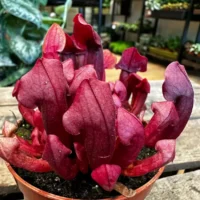
A great website, with some beautiful items that are well presented. Perfect free gift provided and delivery was super quick, with good packaging too! Thank you.
Arrive quickly, well packaged and exactly as described, although the post office clearly missed the huge, live plant, and fragile stickers🤣
Very fast delivery, website easy to navigate
Excellent plants in good condition which we were very well packed for delivery.